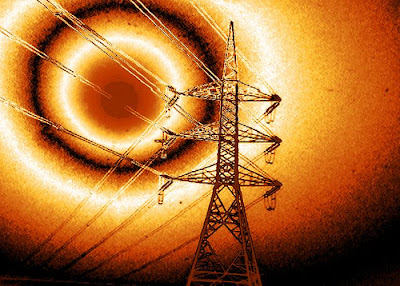Photo Courtesy: Jalalspages
For quite some time now, we are living in dark ages. The term “shortfall” which was never heard before has been coined to explain the inability of the WAPDA to provide electricity to everyone. We have landed into troubled times because no one has ever devised a strategy to address our power requirements for the last so many years, rather decades. Except for “reaching a consensus” on the construction of the disputed Kala Bagh Dam, on which efforts to reach a consensus started in the early 50s, nothing much has been done to address the problem.
As of present, despite being a non oil producing country(though we proclaim so for a paltry few thousands of barrels per day as against millions by the actual oil producing countries), our major power generation reservoir comes from the thermal power generation capability, which is about 65% of the total capacity. This is followed by 33% from the hydroelectricity and a bare 2% from nuclear energy. Of the total installed capacity of 19,505 megawatts, we at best produce around 13,000-15,000 MW, while the remaining capacity remains unachieved due to many reasons. Thus we continue to face a “short fall” of some 4,000-5,000 MW.
Having said this, the present government has made “arrangements” through the RPPs and in this regard the world’s biggest power ship has arrived at Karachi which will provide us some 230 MW at Rs. 15.50 per unit as against the current cost of some nine rupees and a fraction. But like many other efforts, this is only as short term measure to ease the power shortage and is not a solution in the long term.
What about a power strategy for the future? Well there is nothing of such thing on the cards since each government that comes has a five years mandate (again a rhetoric frequently used to fool people) and makes cosmetic changes or initiate projects that could earn them instant recognition and popularity to win the next term. So why waste energies and tax the brain for evolving long term strategies.
Long time back, through a TV discussion I came to know that in our neighbouring India, they had imposed a ban on manufacturing electricity bulbs over 60 watts to conserve the electricity. In our case, one can see shops lit with 500 watts big bulbs, which have now been replaced to an extent by still bigger energy savers. The policy of limiting bulbs to 60 watts is in fact a long term strategy, which when implemented in a country of one billion people can tell the difference. I don’t think anyone would have ever thought of such a long term resolve to address the energy crisis.
We have yet to turn to the solar energy, which is abundantly available to us throughout the year. I was reading a report on internet that Morocco is investing in the field and plans to produce 2,000 MW. Now by doing so, Morocco would save 12 percent of its present oil imports, which would translate into a saving of $ 500-700 million annually. And that is not all. Morocco would also reduce the greenhouse emissions by 3.7 million tons of carbon dioxide.
Now the two examples of India and Morocco quoted above speak of long term planning, rather than short term goals, which speak of our inability to project our requirements in future and come up with solutions to provide a better living for the future generations, if not the present one.
Beside cheap alternatives (in the long term) like the solar and wind power, we have gigantic coal reserves which no one seems to be talking of. Even if there is a development on the subject, it is not likely to take off in at least next 5-10 years.
I think to start with duty free import of quality energy savers be allowed and the manufacture and use of ordinary bulbs and tube lights be banned. This would save us a sizeable quantity of electricity for use in our otherwise energy starved industry. The ordinary bulb manufacturers be encouraged to switch over to making energy savers through duty free import of new machinery.
Concurrently, the solar panels and the batteries should also be imported duty free and the facility made available to common citizens to lessen the burden on the national grid and present power generation capacity. At present, a solar power source for 5-6 bulbs and two fans costs around Rs. 300,000, this is colossal and cannot be afforded by ordinary people. A relief in this regard would also ease of the load on our power generation capacity.
There is also a lot of potential to produce electricity from our canals and other water courses on small scale. Small turbines can produce adequate electricity for villages in the vicinity at very cheaper rates.
It is time now that we should start to focus on long term projects that are cheaper and suit our environment. Our reliance on alternative energy sources, that is solar, wind and coal, would not only reduce per unit cost of electricity but would also reduce our oil import bill when our reliance on the thermal power generation would reduce.
But this would require a government of big heart and firmness to deal with such projects as the oil producing companies would never like to lose Pakistan as one of the biggest oil importing market in the world. So long we bow to these companies and keep getting blackmailed, a meaningful power strategy would never realize in Pakistan.



















0 comments:
Post a Comment